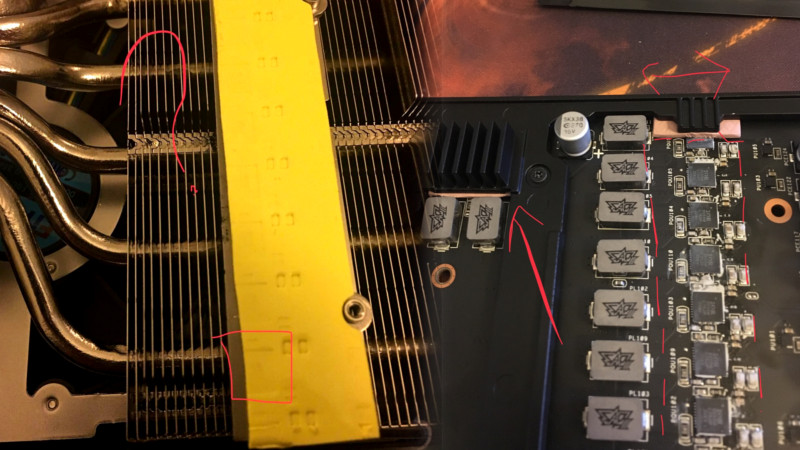Every year, we demand our computers to be ever faster, capable of delivering progressively more eye-watering graphics and doing it all as reliably as ever. Unfortunately, sometimes, new designs miss the mark. [Cloakedbug] was having issues with voltage regulator temperatures on an ASUS Strix VEGA 64 — one of the latest RADEON graphics cards on the market — and decided to investigate.
Right away, issues were apparent; one of the main thermal pads was making poor contact with the FETs it was intended to carry heat for, and was poorly sized to boot. In a show of poor quality, the pad wasn’t nicely sized for the aluminium plate it was attached to, and was applied in a rather haphazard manner. Suspecting this was perhaps one of the root causes of the card running hot, the decision was made to replace the pad with something more suitable.
Specifying a thicker pad that was properly sized to the heatsink plate was the order of the day, and a couple of other smaller heatsink pads were also replaced, all with Thermal Grizzly Minus Pad 8. [Cloakedbug] reports a temperature drop of over 30 degrees C under load on the VR SOC bank, down from 115 C initially. It sounds like this will go a long way to keeping the card happy and healthy over time. Looking around the web, there’s definitely a few reports of thermal issues out there, so this could be a useful fix if you’re having trouble with the same card at home.
In the end, it’s a simple, tidy fix to an expensive piece of hardware that really should have shipped with this sorted from the factory. We’ve seen a fair few thermal fixes over the years here, like this one involving a thermal camera as a diagnosis tool.
[Thanks to Keith O for the tip!]















Cost cutting strix again instead of a properly crafted cooling solution to begin with all for a few million extra.
Yeah this could be a new trend in the community fixing industrial design fails – whereas the community should really just be boycotting such products. No sale Asus!
Wow that’s some terrible design work there. Aesthetics over function to begin with it seems or why otherwise would the heated components be offset from the center of the thermal mass? The heat-sink barely covers the hot components to begin with. Not having quality control on the placement of thermal conductors is just the final straw in a chain of poor design choices imho.
Adding a heatsink on top of the VRM cascade is a hack of it’s own (the parts are not designed to be cooled like that), it should be cooled by sinking heat into the thick PCB power rails…
Even so: if you do want to force-cool them, they should each have their individual connection. I.e. they should be thermally isolated from each other, as some might get hotter than others, and heat up their neighbours.
It’s all quite shabby design, to be honest. If Asus would have added more FETs, they would also have run more cool. Or if they used ‘heavier’ FETs that could be mounted to the heatsink directly.
“Every year, we demand our computers to be ever faster, capable of delivering progressively more eye-watering graphics and doing it all as reliably as ever. ”
Turn off shading in most games, and just look at all the triangles being pushed. A minor miracle in itself.
> We’ve seen a fair few thermal fixes over the years here, like this one involving a thermal camera as a diagnosis tool.
I think there’s a link missing there.
Thanks Mike, fix’d. :)
What sizes and thickness for the pad was used for this fix?
120x20x? There are several varieties of the Thermal Grizzly Pad Minus 8. I’m going with the 1.5mm (thickest) to ensure good contact.
Thanks!